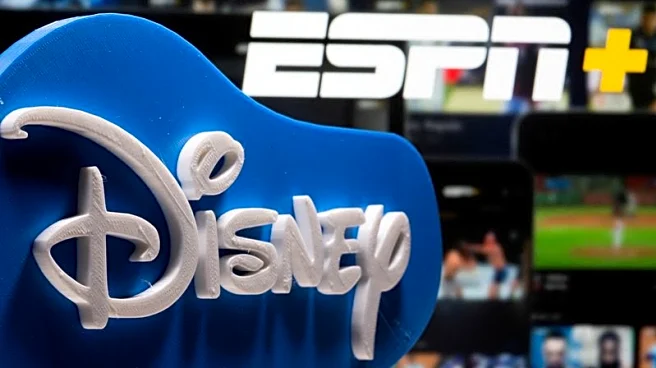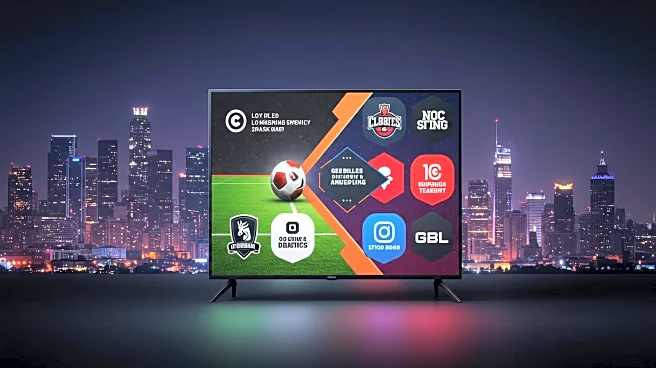What's Happening?
ESPN is launching a new direct-to-consumer streaming app, marking a significant shift in its approach to sports media. The app, set to debut on Thursday, aims to enhance viewer engagement by offering interactive experiences alongside traditional viewing. ESPN Chairman Jimmy Pitaro emphasized the app's role in redefining sports media, aligning with Disney CEO Bob Iger's priorities. The service will include ESPN's linear networks and features like AI-generated SportsCenter, betting, and fantasy sports options. The app is priced at $30 per month, with pay-TV subscribers receiving access at no extra cost.
Why It's Important?
The launch of ESPN's streaming app represents a strategic move to adapt to the evolving media landscape, where streaming services are increasingly dominant. By offering interactive features and integrating with traditional pay-TV, ESPN aims to retain its subscriber base while attracting new users. This development could influence the sports media industry, prompting other networks to explore similar direct-to-consumer models. The app's success may impact ESPN's market position and revenue streams, as well as the broader dynamics of sports broadcasting.
What's Next?
ESPN plans to collaborate with distributors to ensure seamless access to the app, focusing on educating consumers about its features and benefits. Promotional efforts, including ads featuring John Cena and a New York Subway takeover, aim to boost awareness and adoption. As ESPN navigates the complexities of streaming integration, its approach may set precedents for other media companies seeking to balance traditional and digital platforms.
Beyond the Headlines
The introduction of ESPN's streaming app raises questions about the future of sports media and the role of technology in enhancing viewer experiences. The app's interactive features reflect broader trends in media consumption, where personalization and engagement are increasingly valued. This shift may influence how sports content is produced and delivered, potentially reshaping audience expectations and industry standards.












